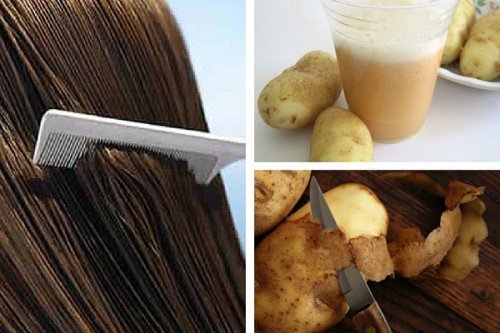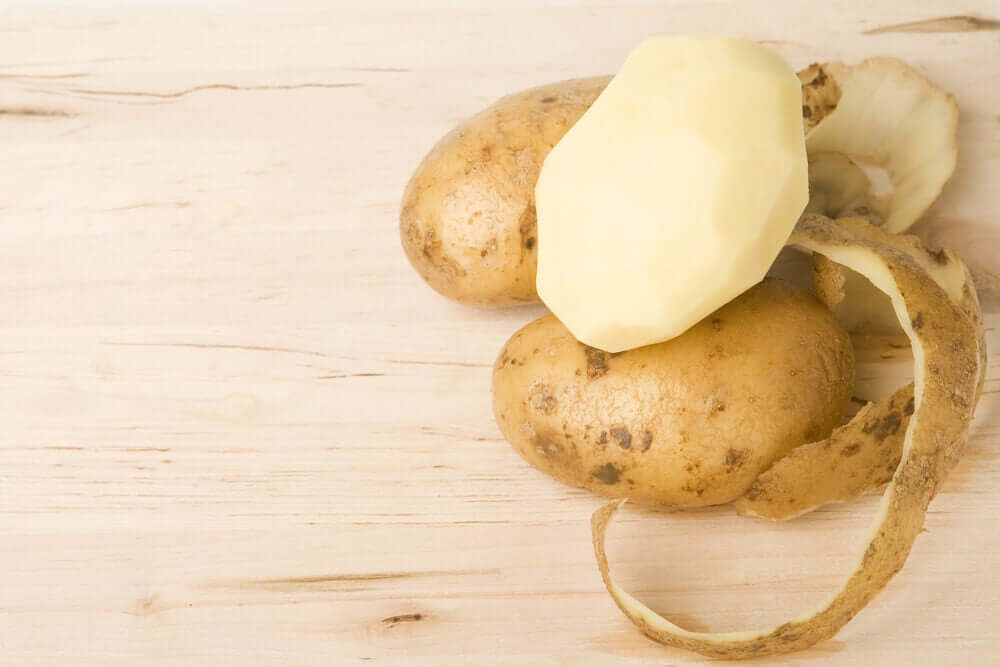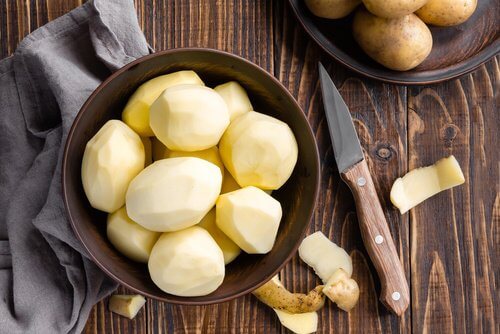How to Make and Use a Potato Solution for Hair Growth

A potato solution is an old natural remedy for boosting hair growth. Thus, you may have already heard about it. No worries if you haven’t. Today’s article will tell you everything you need to know.
Of all the hair-related problems affecting men and women today, thin hair or hair loss continues to be at the top of the list. Hair loss can be caused by a variety of factors. It’s both a beauty and health issue that might indicate a nutritional deficiency. However, it can also be due to genetic factors. Most of the time, there are ways to fix it.
Hair loss can come with all kinds of growth difficulties. This is why it’s hard to keep any remaining strands in good shape and long long. To address that issue, here’s a natural alternative: potato juice.
What makes a potato solution good for hair growth?

According to popular wisdom, potato juice can be an effective alternative hair treatment. It’s a great way to provide essential nutrients like Vitamins A, B, and C, which your hair needs. Having a deficiency in any of these can cause your hair structure to weaken. Not just that, insufficient vitamins can make it dry and fall out more easily.
A potato solution also provides important minerals like calcium, manganese, zinc, and iron. These play an important role in both the underlying health and external appearance of the hair.
The regular and moderate use of this vegetable in your diet is one way for its benefits to rub off on you. Applying it directly to the hair is the most effective way to tackle hair problems, though.
We recommend you read 8 Tips for Amazing Hair
How to make a potato solution for your hair
There are several ways to use potatoes to deter hair loss. A solution made with this vegetable is one of the best options as it includes all of its vitamins.
Ingredients
- 4 potatoes
- 1/2 c. of water (100 ml.)
Preparation
- Firstly, wash the potatoes and cut them into large pieces
- Then, add them to a blender along with the half cup of water and blend them until the solution is smooth
- Then, once you achieve a puree-like consistency, press the pulp through a muslin cloth and into a container
- Once you’ve separated the juice from the pulp, use it as follows
Mode of application
- To stimulate the development of thicker, healthier hair, you should first apply the potato juice for healthier hair to your scalp through a gentle massage
- Then apply the juice to the rest of your hair and cover your head with a shower cap
- Then, wait 20 to 25 minutes and then rinse with warm or cold water
- Finally, use this treatment every day until you start to see results and continue using it up to three times a week once you notice improvement
A potato solution to strengthen hair

The pulp of the potato isn’t the only part you can use to thicken and nourish your hair. You can make a different kind of juice to strengthen it using potato peels. This can be a complement to the above hair treatment.
See also Benefits of potatoes for health
Ingredients
- Potato peels
- 1 qt. of water
Preparation
- Firstly, thoroughly wash the potato peels to remove any traces of soil, add them to the water, and then bring them to a boil
- Then, remove them from heat once they’re cooked and allow them to cool down
Mode of application
- You can use the cooking liquid as a final rinse after washing your hair
- Finally, repeat this two to three times a week for best results
Add potatoes to your beauty routine

This procedure doesn’t just promote healthier hair but also conditions and brightens healthy hair.
In conclusion, this potato solution to improve the health of your hair is worth a try. Finally, while the effects might not be immediate, those who use it on a regular basis swear by it.
All cited sources were thoroughly reviewed by our team to ensure their quality, reliability, currency, and validity. The bibliography of this article was considered reliable and of academic or scientific accuracy.
- Camire, M. E., Kubow, S., & Donnelly, D. J. (2009). Potatoes and Human Health. Critical Reviews in Food Science and Nutrition, 49(10), 823-840. https://doi.org/10.1080/10408390903041996
- Rodríguez, M. A. P., Ledesma, B. H., González, M. J. G., & Barba, O. (1999). Estudio del contenido de nitratos, nitritos y vitamina C en productos hortícolas de cultivo ecológico (zanahoria, remolacha y patata). Alimentaria, 316, 111-118. https://dialnet.unirioja.es/servlet/articulo?codigo=133760
- Suto, M., Masutomi, H., Ishihara, K., & Masaki, H. (2019). A Potato Peel Extract Stimulates Type I Collagen Synthesis via Akt and ERK Signaling in Normal Human Dermal Fibroblasts. Biological & Pharmaceutical Bulletin, 42(9), 1510-1516. https://doi.org/10.1248/bpb.b19-00193
- Sweet potato, raw, unprepared (Includes foods for USDA’s Food Distribution Program). (s.f.). FoodData Central. https://fdc.nal.usda.gov/fdc-app.html#/food-details/168482/nutrients
- Visvanathan, R., Jayathilake, C., Jayawardana, B. C., & Liyanage, R. (2016). Health-beneficial properties of potato and compounds of interest. Journal of the Science of Food and Agriculture, 96(15), 4850-4860. https://doi.org/10.1002/jsfa.7848
This text is provided for informational purposes only and does not replace consultation with a professional. If in doubt, consult your specialist.








